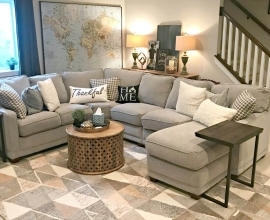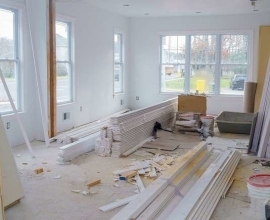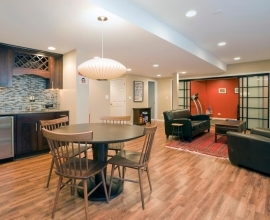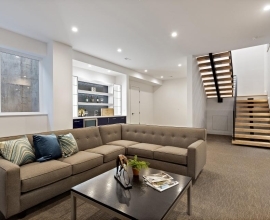Popular Methods of External Basement Waterproofing
Basement waterproofing has become increasingly popular as homeowners have sought to convert rough basement space into living space. Waterproofing techniques and strategies can be grouped into two major categories: External and Internal. In this article we will explore popular methods and techniques of waterproofing basement walls externally.
Why waterproof your basement walls externally? Isn’t it true that internal waterproofing is more popular and cheaper? Well generally speaking, yes. Internal methods are very popular and many of them can be extremely affordable. However, strictly speaking internal basement waterproofing is not really waterproofing at all because you’re not preventing water from entering the basement walls. Rather, you’re devising methods of dealing with the water once it does enter. On the other hand, when you waterproof your basement walls externally you are actually preventing water from entering them in the first place. This is important because water is naturally destructive to building materials. Over time constant water exposure breaks down the composition of any material even the mortar and block of which most foundation walls are built.
So what can be done to the outside of your basement walls? Well, exterior basement waterproofing really boils down to two types of strategies: drainage and barriers. There is also a third strategy known as diversion which can be thought of as an adjunct to drainage. Drainage means you’re installing systems to drain water from the ground surrounding the basement. Considering that water follows the path of least resistance, you’re giving the water an easier path to follow than to enter your foundation walls. Diversion systems refers to the rain gutters and downspouts on your house. These systems are designed to divert that rain water away from the ground surrounding the foundation and therefore not place any undue burden on the drainage system. Barrier systems involve applying a waterproof coating to the outside surface of your foundation walls. This way the small amount of ground moisture in contact with your basement walls will still not enter because it can’t penetrate the waterproof barrier. All of the products, devices, and techniques available for external basement waterproofing fall into one of these three categories. Furthermore, they are all more effective if employed in concert with one another.
Both barrier and drainage methods have something in common. They both require substantial excavation around the structure to expose the basement walls. This excavation represents the majority of the cost of exterior waterproofing and is probably the biggest reason most homeowners opt for interior solutions. Excavation is not only costly but it is disruptive and risky. An inexperienced operator can actually damage your foundation walls with an excavator. Excessive excavation at any one point can cause shifts in your foundation walls. Finally, there’s always a chance that excavation can damage an underground utility line that was either incorrectly marked or just not know about. All of these possibilities can add substantially to the cost of the project. Despite the risks and costs associated with external waterproofing the benefits may still make it a worthwhile endeavor.
Exterior drainage systems are usually referred to as footer drains or tile drains. These systems are comprised of a channel that is dug around the perimeter of the foundation walls at a depth just below the wall footer. The channel is filled with an aggregate, in other words, gravel. In the middle of the aggregate lies a pipe. The pipe has perforations that allow liquid water to enter. As ground water descends it finds little or no resistance to entering the trench because of the abundance of air spaces within the gravel (aggregate). Once in the trench, the water also easily enters the pipe through the perforations. The pipe then leads to a remote drainage location such as a storm drain or a natural ground water drainage path.
A good exterior footer drain system benefits greatly from a good diversion system. As we mentioned earlier, a diversion system is comprised of the rain gutters and spouts on a building. You might be wondering why you need to worry about the rain water when you have an underground system draining water away from your house. The reason is because water carries silt and other particulate matter dissolved within it. Over time, that sediment accumulates within the footer drains and begins to obstruct the flow of water. The more water flowing into the footer drains, the faster sediment will accumulate. A good diversion system will keep most rain water out of the drainage system. This is accomplished with gutters collecting water from the roof edges and downspouts emptying at least 5 feet away from the foundation walls onto ground sloping away from the house. Ideally, the downspouts will drain into underground pipes emptying into storm drains. The more rain water is diverted away from the footer drainage system the longer the system will last.
Finally, the barrier systems are waterproof layers applied to the outside surface of the foundation walls. Once the ground is excavated to expose the wall surfaces any residue of soil is removed to get a clean application. The barrier material, which is often referred to as a sealant, is usually based on rubber or a polymer. Some products are actually a cement or asphalt and applied as such. The latest commercially available products are quite versatile. They are thin enough to be applied with sprayers which greatly reduces the labor required yet they are also durable enough and strong enough that once fully cured many are warranted to last 10 years or more with proper application.
Eric Lachance is the heart of Royal Renovations Ottawa. Eric has more than 25 years of experience in the contracting and remodeling/renovation industry. All of his projects are completed professionally, meticulously and with great pride which is demonstrated by his superior craftsmanship.
Article Source: https://bit.ly/3LL6Lk4







